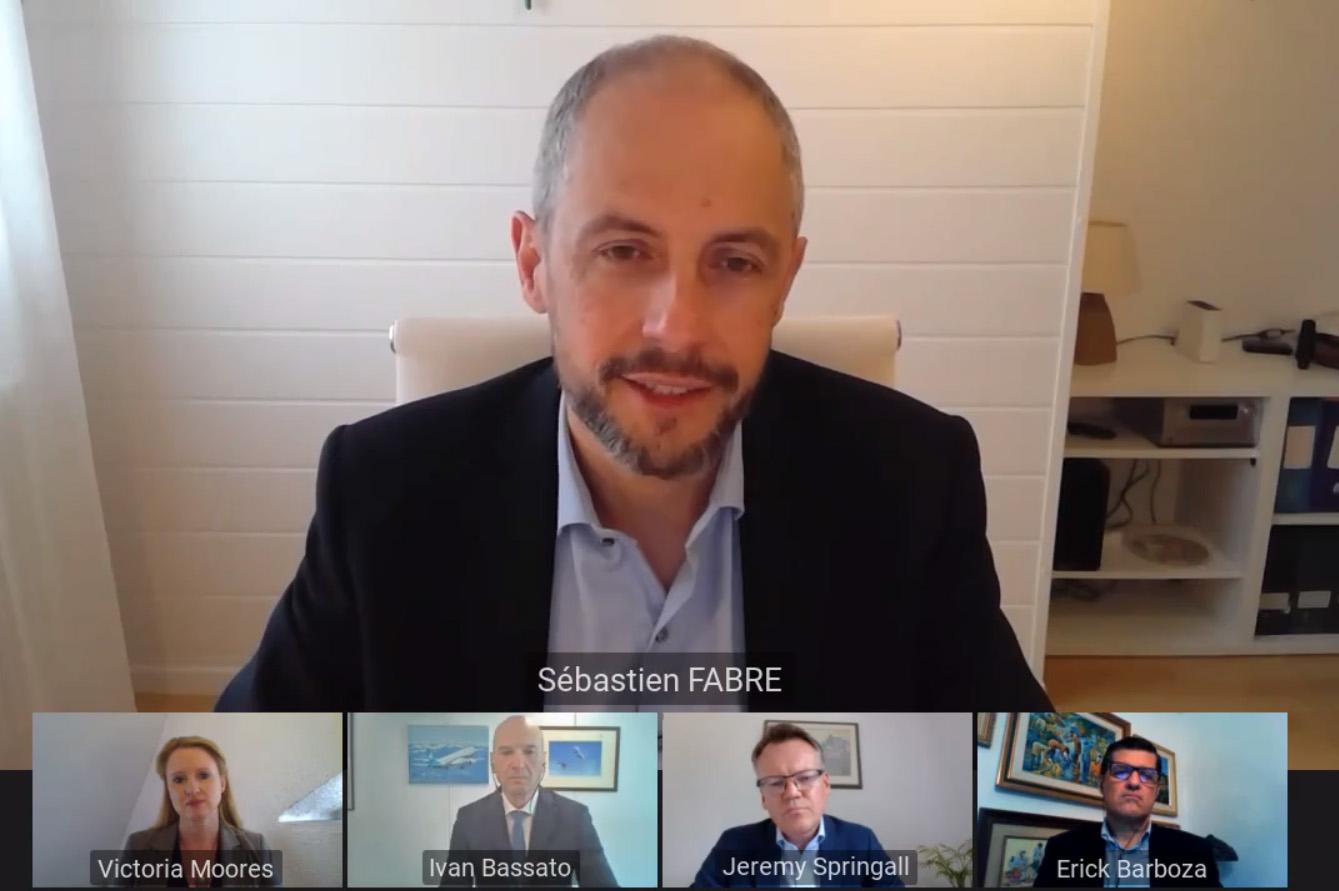ATW SITA webinar: Experts spell out future shape of airport experience

Much of the technology needed to make airports safe environments in the post-COVID-19 era already exists—the challenge will be to introduce it in weeks or months, rather than years, SITA VP-airline and airport Sébastien Fabre said June 10.
Speaking on an ATW webinar sponsored by his company, entitled “Returning to the Skies: Redefining the Passenger Experience in a post-COVID-19 world,” Fabre said that “technologies are at the center of our answer” to getting passengers back into the air again, “but the technology is not the problem because it’s already there. The problem is the speed at which we roll it out.”
Also critical to getting passengers moving through airports again will be collaboration and harmonization of standards, and reassuring passengers that the air transport industry, particularly airports, can be trusted to deliver a safe experience.
Several speakers pointed out the need to cut down personal contacts while moving through an airport will create a huge boost for digital technologies, such as biometric facial recognition and online check-in.
Getting passengers to adopt the latter measure more widely will call for major educational campaigns through social media, several speakers said.
Giving an idea of the scale of the problem, Erick Barboza, CCO of Aeris, which runs Juan Santamaría International Airport in Costa Rica, noted that 70% of its passengers prefer to use traditional, staffed, check-in desks. Changing that would require both staff on the spot and social media campaigns to encourage passengers to switch to self-check-in, or to doing so online.
Fabre said that smartphones would become the fundamental instrument in promoting no-touch progression through airports, through capabilities such as printing bag tags from the mobile device. “We were doing that anyway before the crisis. We thought we would deploy this over several years. Now, we need to do it in hundreds of airports in the next months.”
Mobile phones could also be used as a means of warning people that they were in an area that was becoming crowded, via the use of flow monitoring techniques to predict crowd movement, he said.
Fabre thinks it is unlikely that travelers will go back to their old habits once the pandemic is over, saying that “passengers usually like to be autonomous and prefer to deal with self-service technology.”
Aeroporti di Roma EVP-airport management Ivan Bassato noted that his organization had swiftly deployed thermal scanners when the pandemic began and now has more than 80 in operation. They are not the solution to the problem, he said, but they play a useful role, by dissuading people who are ill from traveling.
Aeroporti di Roma has also started the spray disinfection of all baggage of incoming passengers before they pick it up at the luggage carousels and this measure has been well received by passengers, he said.
The risk of picking up an infection from baggage was very low, he added, but the measure helped reassure passengers that airports are taking care of them right through their journeys.
SITA VP-border management Jeremy Springall cautioned, however, that passengers are likely to have to negotiate a new administrative process in the wake of the pandemic, in the form of completing some type of health declaration, probably at some point in the 72 hours prior to travel. Thailand and Singapore are already doing this.
This will mean that authorities will have to ensure the confidentiality of travelers’ health information, which could be passed between multiple stakeholders: “Establishing standards around data-sharing is going to be critical, especially health data,” he said.


